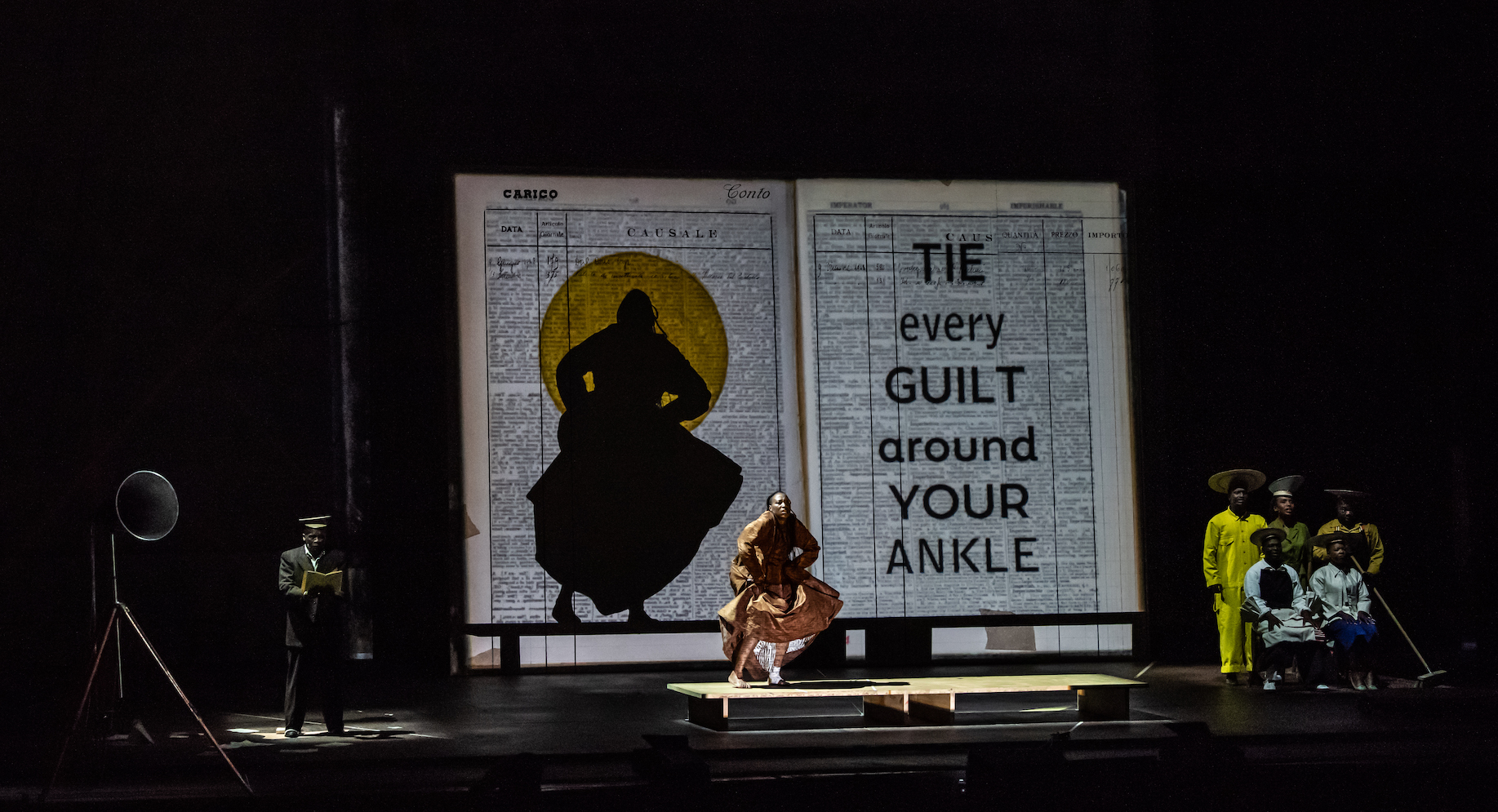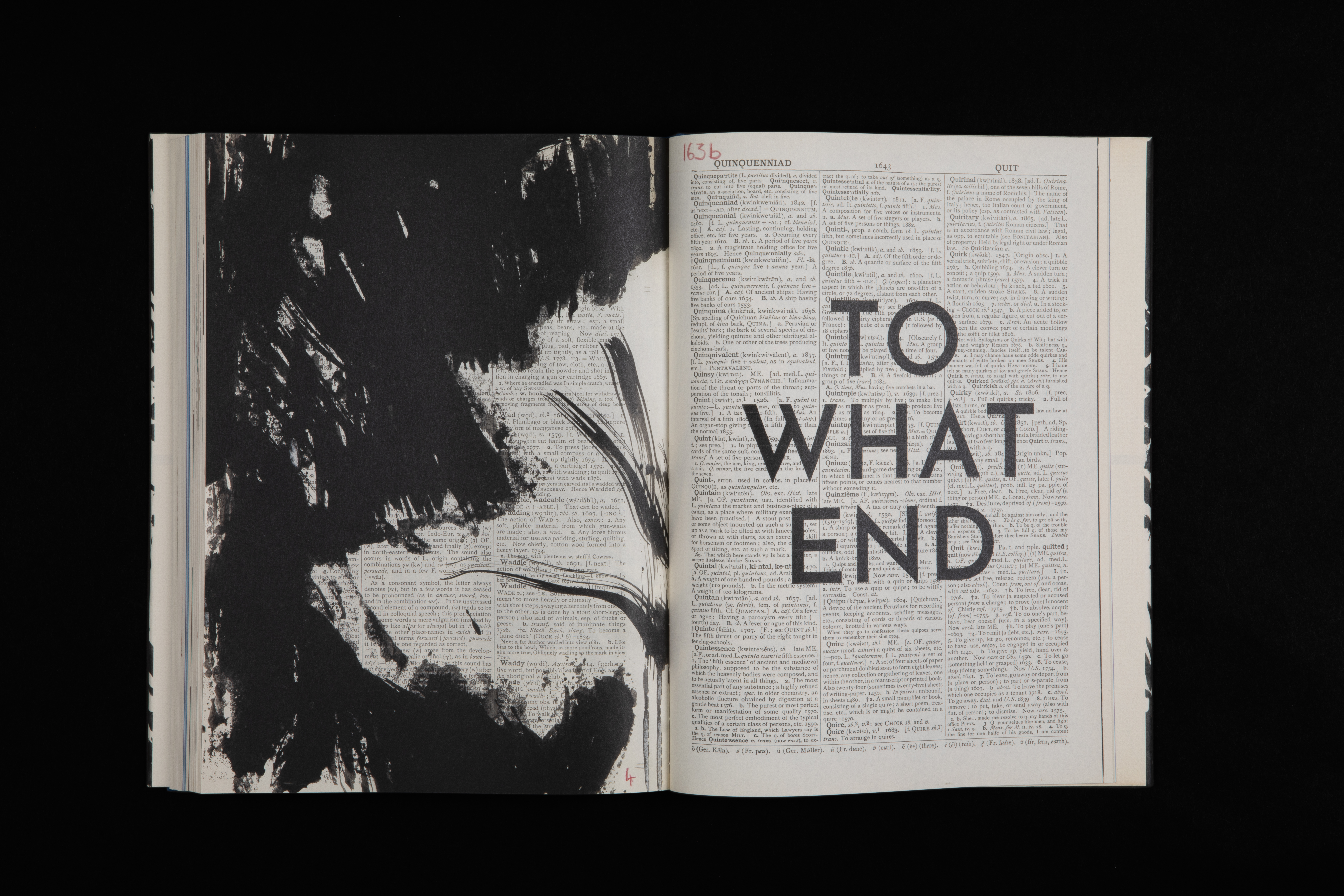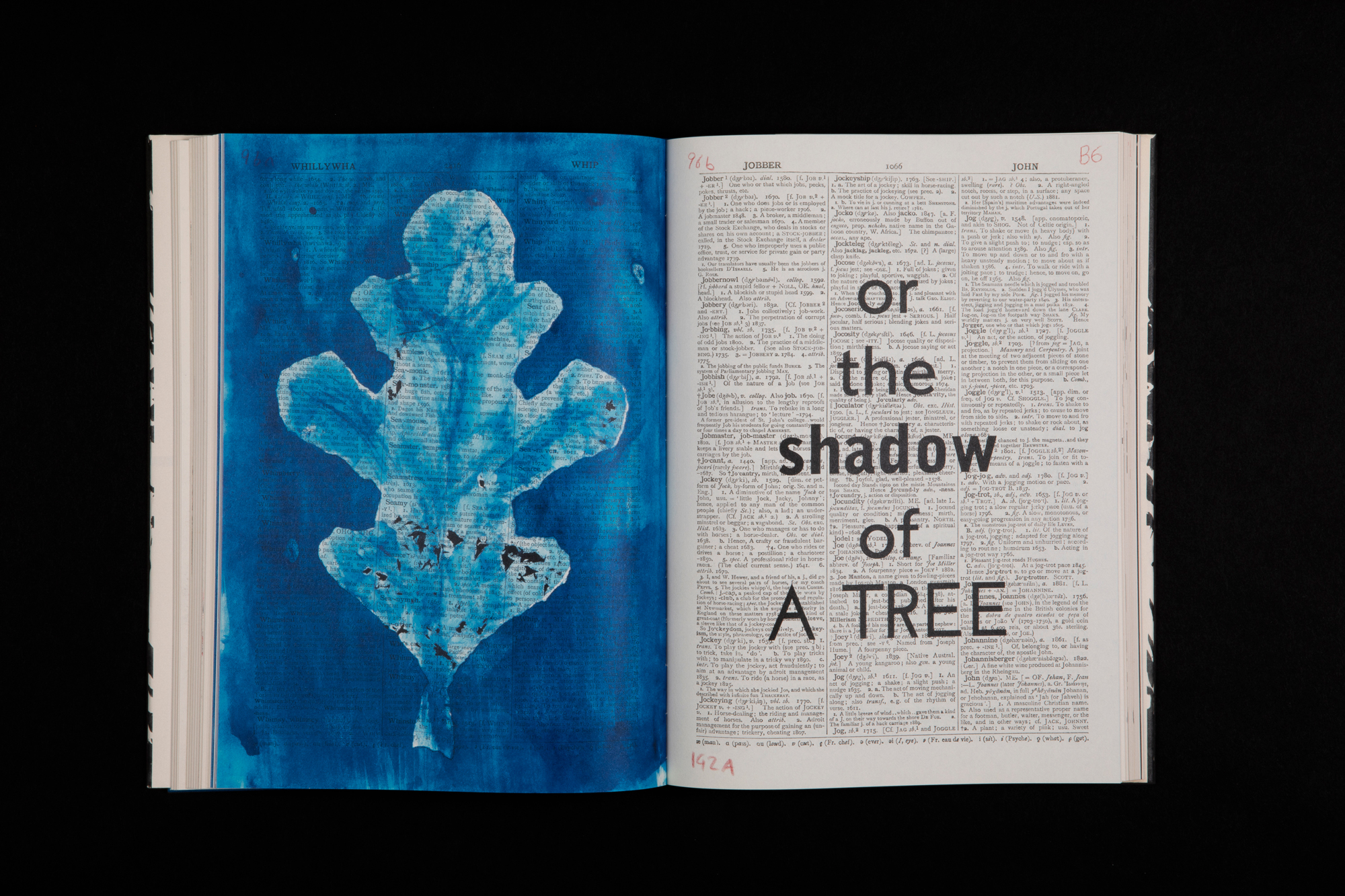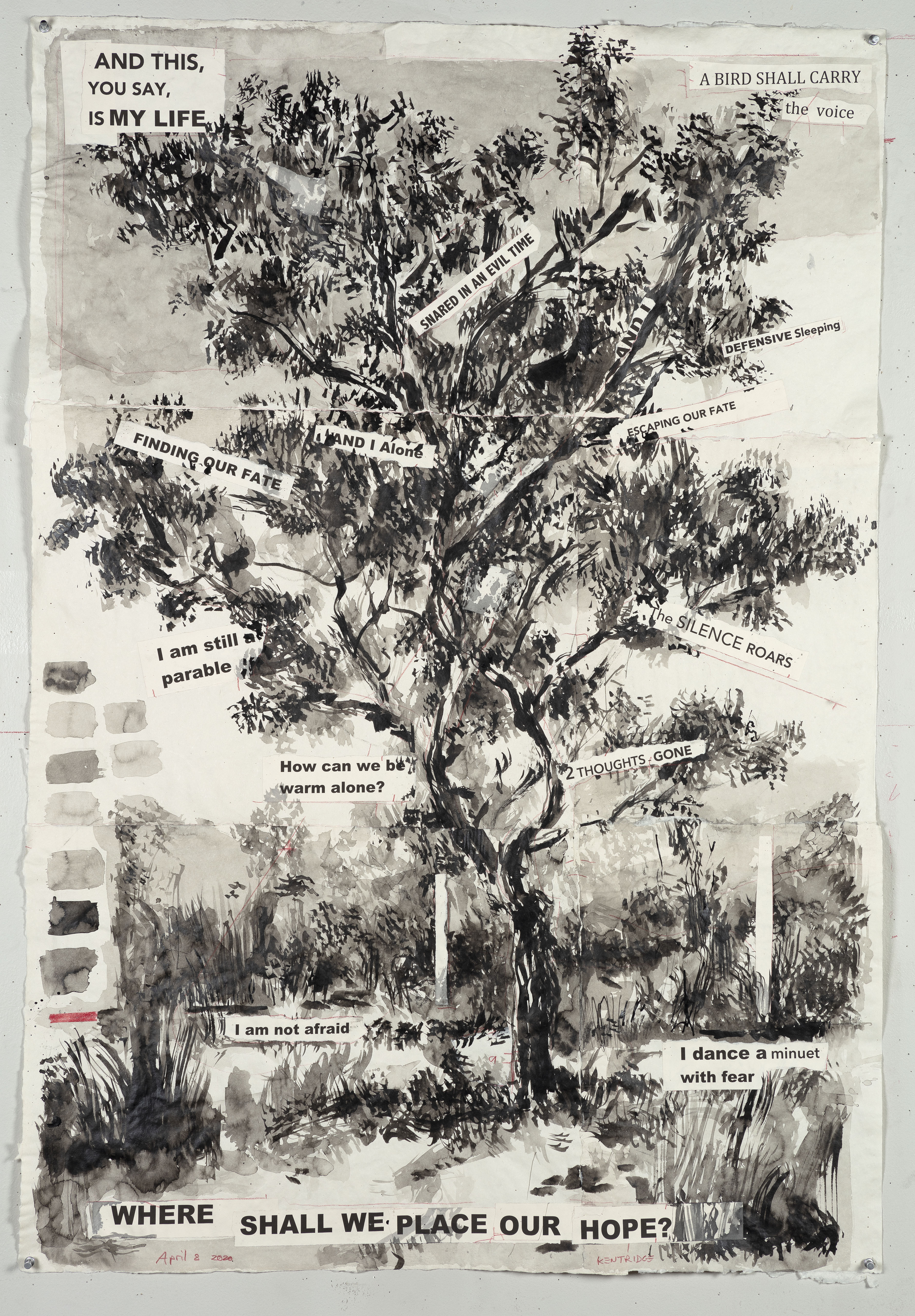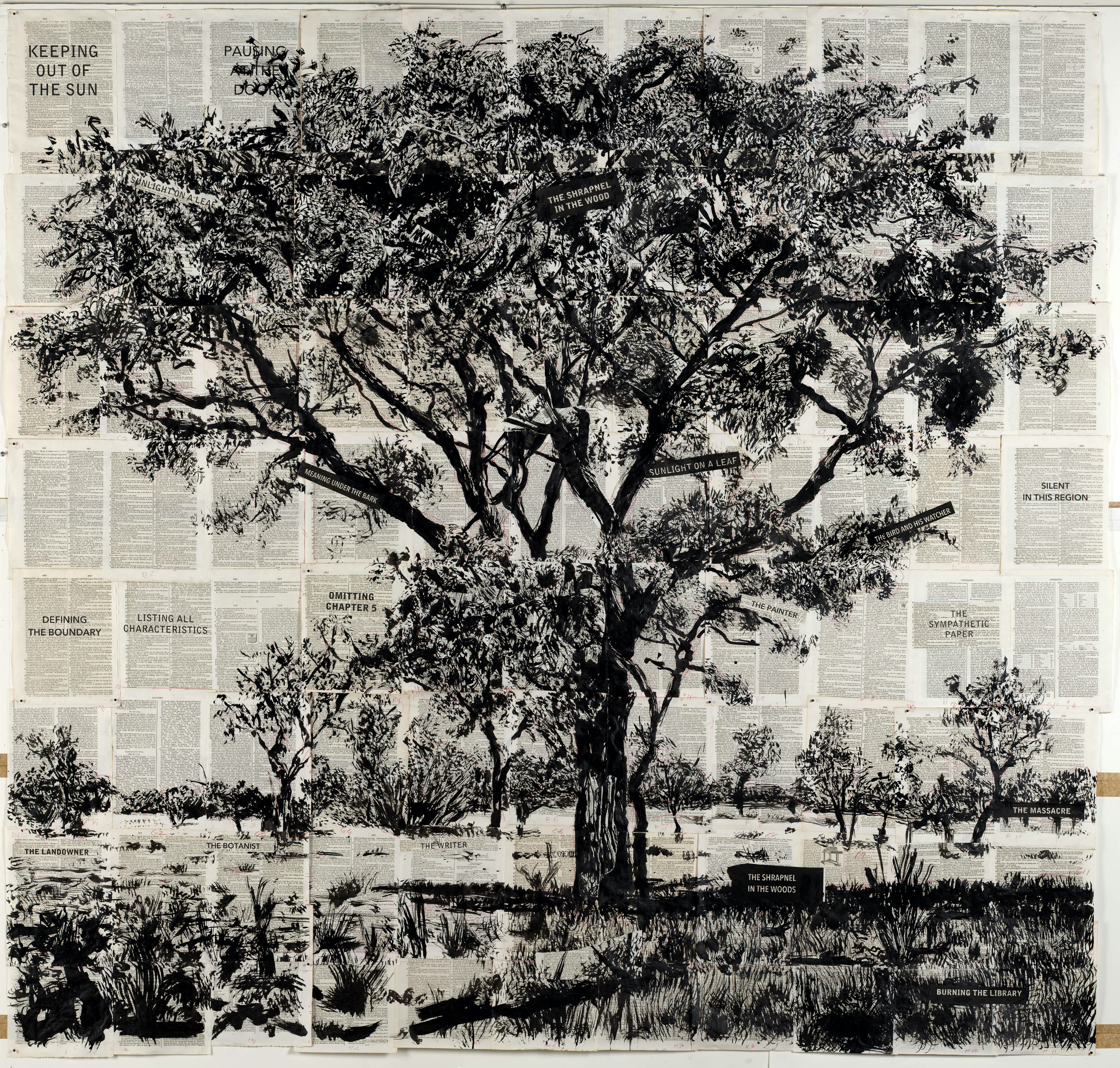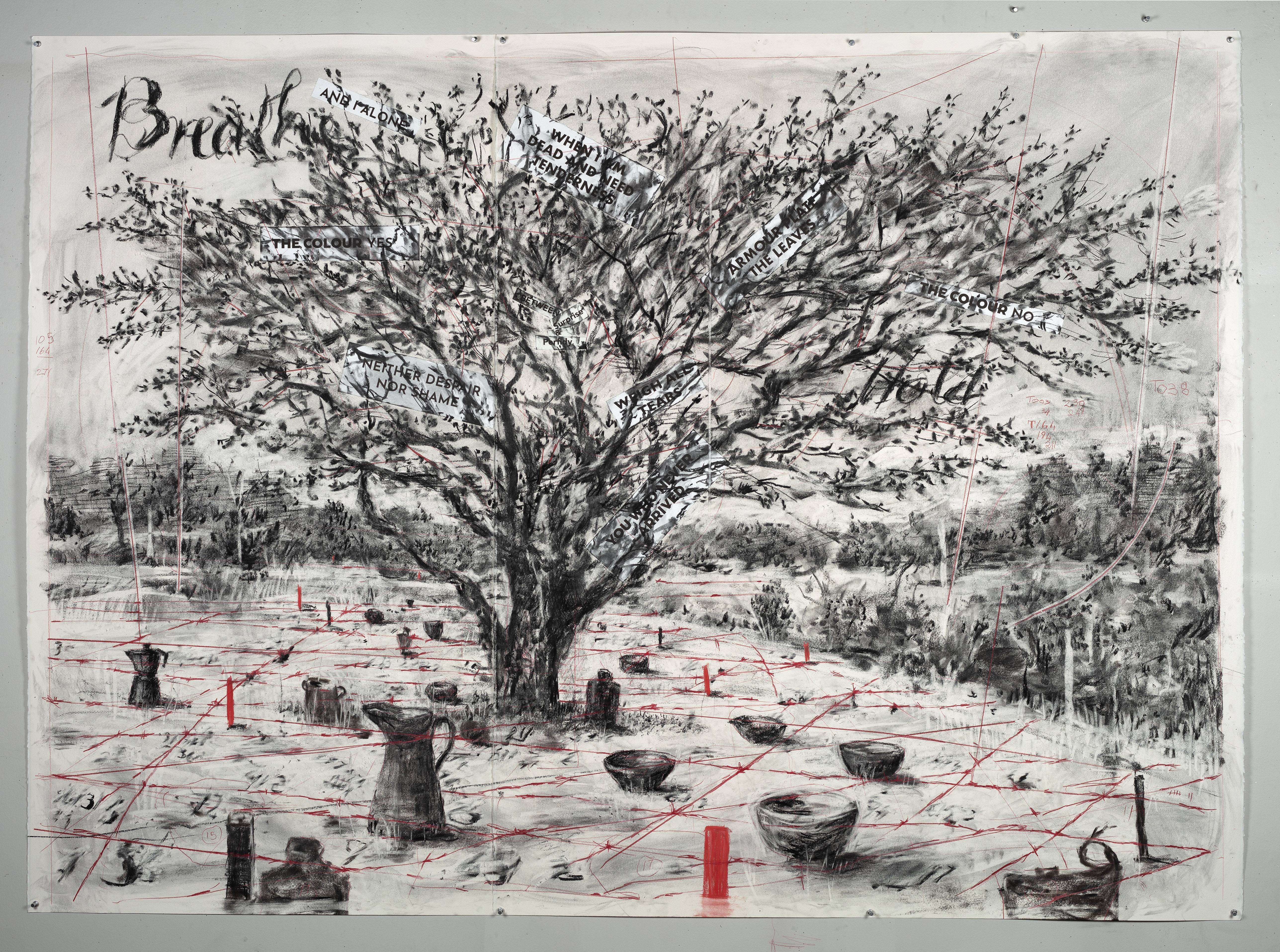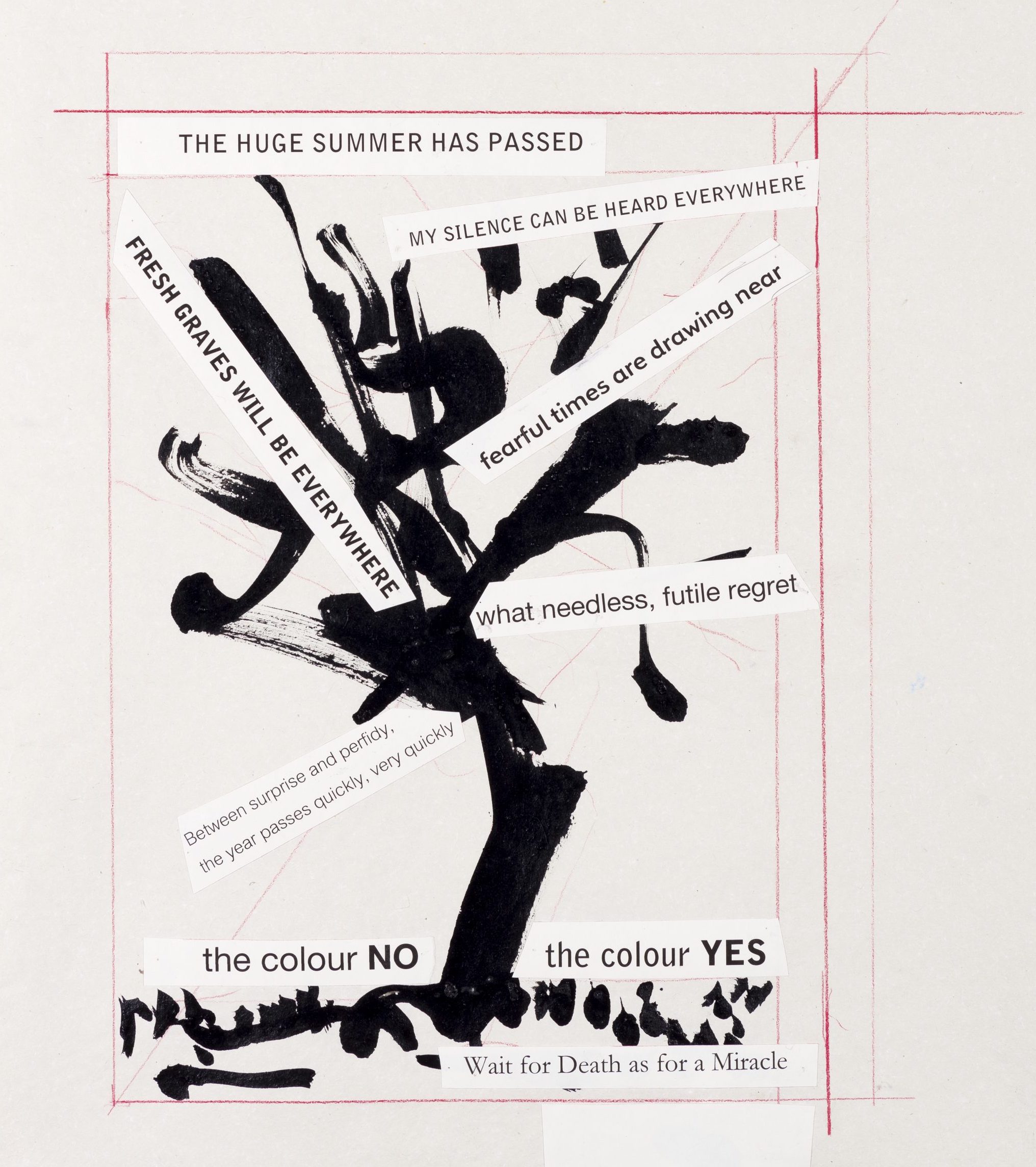During the successive COVID lockdowns in 2020, I was fortunate enough to work on the making of the book Waiting for the Sibyl by William Kentridge. Fortunate, in the first instance, to have work when many others did not, and in the second, to engage the content for the book, so thematically relevant to the times.
Waiting for the Sibyl was conceived as a project for Teatro Dell’Opera Di Roma in 2019. A series of ink and charcoal drawings together with aphoristic phrases – the libretto for the opera – both made on pages from an old Oxford English Dictionary, were projected as a backdrop to the performers on stage. It was from this series of drawings and text fragments that the content for the book was taken.
As William writes in the programme notes to the opera:
‘The story of the Cumaean Sibyl was that you would go and ask her a question. She would write your fate on an oak leaf and place the leaf at the mouth of her cave, accumulating a pile of oak leaves. But as you went to retrieve your particular oak leaf, a breeze would blow up and swirl the leaves about, so that you never knew if you were getting your fate or someone else’s fate. The fact that your fate would be known, but you couldn’t know it, is the deep theme of our relationship of dread, of expectation, of foreboding towards the future.’
Knowing, or not knowing, one’s fate and the associated feelings of dread and foreboding about the future was a collective response to the COVID pandemic. This sense of uncertainty, captured in the drawings and the libretto, made the material for the book all the more pertinent. It was not that Waiting for the Sibyl offered a panacea or way out of this uncertainty, but rather that it presented uncertainty as a condition to be embraced. As William puts it: ‘Uncertainty is an essential category. As soon as one gets certain … the voice gets louder, more authoritarian and authoritative, and to defend themselves they will bring an army …’; words that ring true for much of the political posturing that unfolded during the pandemic.
With the kitchen table converted into an office, working from home – a second floor apartment in the south of Amsterdam – I had a view through the window of the oak trees that lined the empty street. As winter turned to spring, their barren branches showed the first sign of the explosion of green that was to follow. Witnessing this transformation, seeing the branches each day in intimate detail while working on the Sibyl book, the presence of trees became pervasive.
Trees feature prominently in William’s work, each made up of a series of panels or tiles and accompanied by text phrases that appear to sprout from the branches. These, however, are not the oak trees of Europe, but rather the trees that define the landscape surrounding Johannesburg – the common hook-thorn, the bottlebrush, the stinkwood and so on. In the drawings, as in the landscape from which they originate, the trees are assiduously black and white; not green, or perhaps ‘the colour no’, to cite a phrase that appears in the branches of the trees.
When discussing the potential origin of the tree drawings, William refers to a memory from childhood. Between the ages of three and six years old, his father worked as the lawyer representing 156 defendants in the Treason Trial in South Africa (1956 -1961). At the bottom of the garden of the family home there was a group of fir trees and on the veranda, a mosaic table. To his young mind, when William’s father went to work each day, it was to the ‘Trees and Tiles’.
This etymological link is revealing of the position that trees hold in William’s work. When looking at the tree drawings, which are often made at a larger scale, I get the overwhelming feeling that the trees are looking back. Not in an anthropomorphic sense, but rather in the way that trees look, if that can be called looking at all. They are like witnesses at an ongoing trial. But a trial of what exactly? The folly of human endeavour perhaps, with its constant striving for certainty. Or just the trial of living, whatever that may be.
In one of the tree drawings is the phrase: ‘The Shrapnel in the Wood’. This makes reference to the trees in Germany during World War II, where shrapnel from explosives was deposited inside the wood of growing trees, waiting to be discovered so many years later by an unsuspecting carpenter. Here the trees embody and present the evidence. They are literal witnesses. But evidence does not provide a direct line to the truth. It must be subject to interpretation and argument. So it is with the phrases that appear in the tree drawings. They are not declarations of a supposed truth, but rather set in motion the ongoing process through which language, meaning, and ultimately truth constructs itself.
Back in Amsterdam, set into the paving stones at the foot of the stairs that lead from the street to the apartment on the second floor, is a small bronze plaque bearing a name: Cornelia Knorrunga-Boekdrukker. The surname, ‘Boekdrukker’ – directly translated as book printer – is another etymological coincidence, encountered every other day as I leave the apartment under lockdown rules to work with the printer on the Sibyl book. This is one of thousands of similar plaques dotted about the pavements in Amsterdam. They commemorate the places where Jewish residents of the city lived before their names were handed over by Dutch authorities to the Nazi occupation.
Looking at this plaque, more phrases from the tree drawings come to mind: ‘You who never arrived’; ‘How can one be warm alone’; ‘Snared in an evil time’; ‘I’m not afraid’; ‘Weigh all the tears’; ‘When I’m dead and need tenderness’; ‘My silence is heard’; ‘Fresh graves will be everywhere’. Phrases that apply equally to recent events as they do to World War II. The oak trees that line the street have been the silent witnesses to it all. Although, perhaps not so silent if we only knew how to listen.
Text and selection by Oliver Barstow, October 2021
